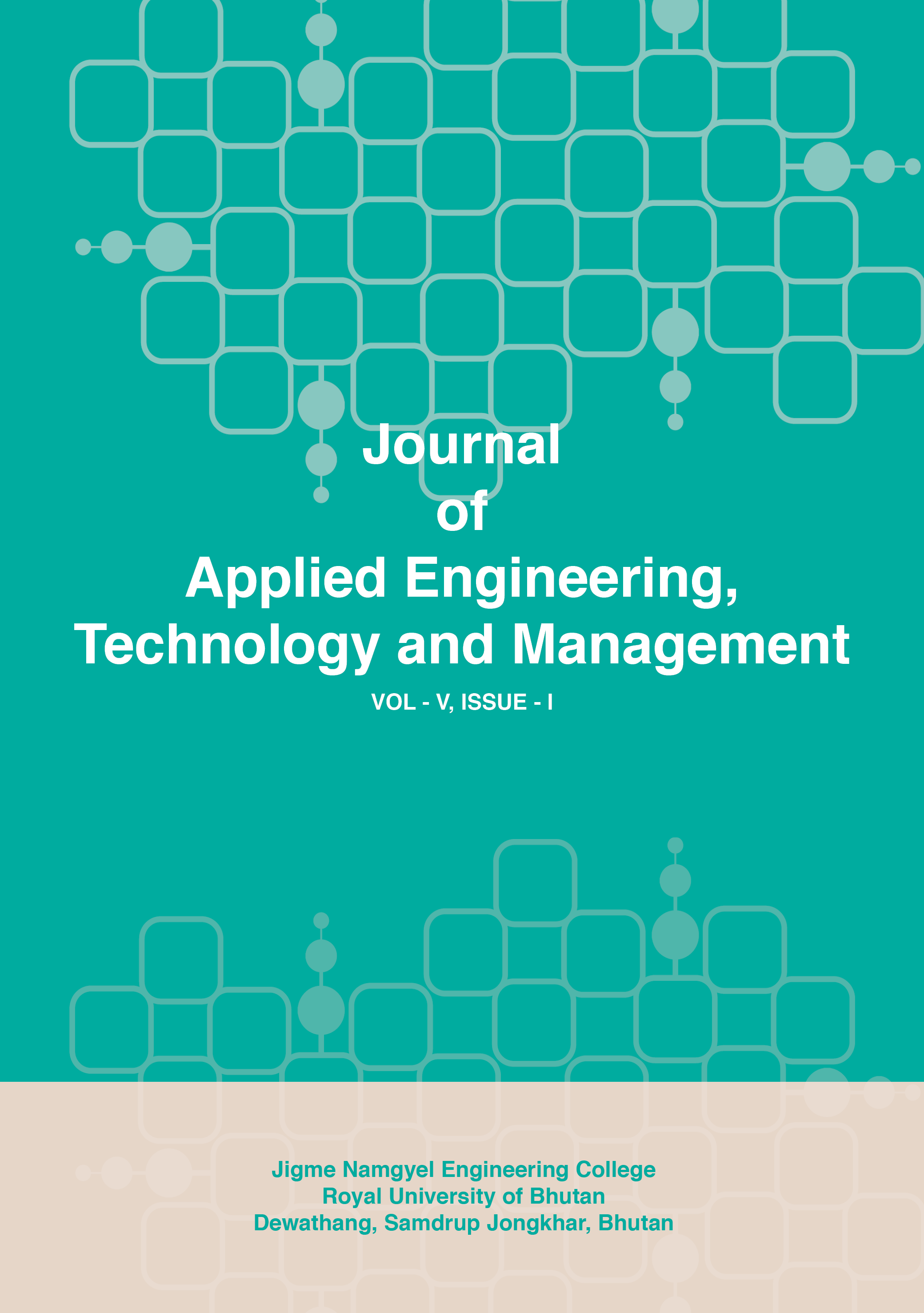Development of a small-scale 3D concrete printer
DOI:
https://doi.org/10.54417/jaetm.v5i1.142Keywords:
3D Concrete Printing, Lab-Scale Printer, Screw-Driven Extruder, Cost-Effective Fabrication, Arduino-Based Control System, Material FormulationsAbstract
The development of a small-scale 3D concrete printer addresses abstract — The high cost and impracticality of large-scale systems for research use. Measuring 700 mm × 450 mm × 500 mm, this lab-scale printer provides a reasonably priced and easily available solution for running tests on several concrete compositions and printing settings. Three basic parts define the printer: a control unit, an extrusion system, and a linear motion system. Whereas the screw-driven extrusion system guarantees a constant flow of concrete, the linear motion system helps movement along X and Z axes. Under the control of Arduino microcontrollers, the control unit synchronizes various systems for exact running. The manufacturing method consisted of building a sturdy frame from mild steel, building a hopper from high-density polyethylene, and assembling the screw-driven extruder. Carefully chosen to maximize performance were key electronic components like switches, motor drivers, and DC motors. Calibration and testing run confirmed the printer’s operation. Although the system only prints along X and Z axes with a maximum length of 600 mm and height of 300 mm, it offers a reasonably priced platform for research allowing tests on shrinkage and distortion of printed concrete. This advancement shows a stride towards more easily available 3D printing technology for educational and scientific establishments.
References
[1] Arduino.cc, “Arduino,” Arduino, Oct. 29, 2024. [Online]. Available: https://www.arduino.cc/
[2] Autodesk, “Autodesk Student Access to Education Downloads,” Autodesk, Oct. 29, 2024. [Online]. Available: https://www.autodesk.com/education/edu-software/overview
[3] A. Siddika, Md. A. A. Mamun, W. F. A. K. S., and R. Alyousef, “3D-printed concrete: applications, performance, and challenges,” Journal of Sustainable Cement-Based Materials, vol. 9, no. 3, pp. 127–164, 2020. https://doi.org/10.1080/21650373.2019.1705199
[4] S. Cho, “Mechanical evaluation of 3D printable nano-silica incorporated fibre-reinforced lightweight foam concrete,” Fibers and Composites, Jun. 19, 2019. https://doi.org/10.21012/fc10.232696
[5] J. H. Jo, B. W. Jo, W.Cho, andJ. H.Kim, “Development of a 3D Printer for Concrete Structures: Laboratory Testing of Cementitious Materials,” International Journal of Concrete Structures and
Materials, vol. 14, no. 1, 2020. https://doi.org/10.1186/s40069-019-0388-2
[6] A. Kazemian, X. Yuan, E. Cochran, and B. Khoshnevis, “Cementitious materials for construction-scale 3D printing: Laboratory testing of fresh printing mixture,” Construction and Building Materials, vol. 145, pp. 639–647, 2017. https://doi.org/10.1016/j.conbuildmat. 2017.04.015
[7] J. H. Lim, Y. Weng, and Q.-C. Pham, “3D printing of curved concrete surfaces using Adaptable
Membrane Formwork,” Construction and Building Materials, vol. 232, 117075, 2020. https:
//doi.org/10.1016/j.conbuildmat.2019.117075
[8] S. C. Paul, G. P. A. G. van Zijl, M. J. Tan, and I. Gibson, “A review of 3D concrete printing sys
tems and materials properties: current status and future research prospects,” Rapid Prototyping
Journal, vol. 24, no. 4, pp. 784–798, 2018. https://doi.org/10.1108/RPJ-09-2016-0154
[9] A. V. Rahul, M. Santhanam, H. Meena, and Z. Ghani, “Mechanical characterization of 3D printable concrete,” Construction and Building Materials, vol. 227, 116710, 2019. https://doi.org/10.1016/j.conbuildmat.2019.116710
[10] L. Wang, H. Jiang, Z. Li, and G. Ma, “Mechanical behaviors of 3D printed lightweight concrete structure with hollow section,” Archives of Civil and Mechanical Engineering, vol. 20, no. 1, 2020. https://doi.org/10.1007/s43452-020-00017-1
[11] J. Xiao, N. Han, L. Zhang, and S. Zou, “Mechanical and microstructural evolution of 3D printed concrete with polyethylene fiber and recycled sand at elevated temperatures,” Construction and
Building Materials, vol. 293, 123524, 2021. https://doi.org/10.1016/j.conbuildmat.2021.123524
[12] J. Zhang, J. Wang, S. Dong, X. Yu, and B. Han, “A review of the current progress and application of 3D printed concrete,” Composites Part A: Applied Science and Manufacturing, vol. 125, 105533, 2019. https://doi.org/10.1016/j.compositesa.2019.105533
Downloads
Published
How to Cite
Issue
Section
License
Copyright (c) 2025 Copyright (c) 2025 Journal of Applied Engineering, Technology and Management (JAETM)

This work is licensed under a Creative Commons Attribution-NonCommercial 4.0 International License.


